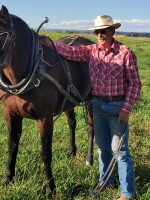A recent U.S.D.A. report pointed out that there were about 1.88 million farms in U.S. at the end of 2024. That’s down about 14,000 farms from a year ago. All sizes of farms declined in numbers, except for farms that had $1 million or more in sales. About 48% of farms had sales of less than $10,000 annually, while 10% of farms had a half a million dollars or more in sales.
While farmers are likely facing tough sledding this year, farm equipment dealers are also expecting some hard times. Members of the North American Farm Dealers Association cite expected lower farm income that will keep farmers out of dealer showrooms, while tariffs on new imported equipment and on steel and aluminum will drive up the cost of both equipment and the price of repair parts that are needed to keep older equipment in the fields. Eric Wareham, senior vice president of government affairs at the North American Equipment Dealers Association, calls the situation “a perfect storm” both for farmers and agricultural equipment dealers.
Bill Bullard, CEO of Rcalf USA recently pointed out that the 2022 Census of Agriculture showed that the U.S. is losing beef cattle and sheep farms and ranches which are vital to the economic well-being particularly in western Rural America. The census points out that since 2017, we lost nearly 107,000 beef cattle farms and ranches and over 21,000 cattle producers, and the beef cattle herd has declined by 2.5 million cows, representing an 8% reduction in the herd, leaving the U.S. with smallest cow herd in decades. The sheep industry lost almost 500 full-time sheep producers with herd sizes of at least 100 head since 2017, and the herd, at 5.1 million head, is the smallest it has been in decades.
Recently, I’ve had people question me about whether it’s necessary that all chickens in a flock be euthanized when the flock is determined to be infected with bird flu, since there have been posts on social media contending that this recommendation isn’t necessary, because the practice is only for the nefarious purpose of controlling our food supply. But USDA staff, state health officials, and veterinarians all point out that the disease spreads so fast through a flock of chickens, turkeys or ducks, that it’s impossible to halt the transmission of the disease, and it’s more safe and humane to euthanize all birds in a flock, before they become ill and spread the disease to wild bird populations or infect humans or other mammals. Unfortunately, since President Trump took over the White House, there have been no bird flu reports, congressional briefings, nor meetings with state health officials. The Centers for Disease Control and Prevention have also been silent about the outbreak, and the U.S. has withdrawn from the World Health Organization, while more people and livestock have tested positive for the disease. In October, the first case of H5N1 influenza in pigs was reported in Oregon, which concerns Michigan Medicine Virologist Adam Lauring, who is an M.D. and Ph D., because, he points out, that every now and then, when when these viruses make it into mammals and then people, they can cause a pandemic, which can then go on to become circulating seasonal flu viruses. Wait! Didn’t that happen about five years ago?
German statesman Konrad Adenauer, who served the Federal Republic of Germany from 1949 to 63. wrote, History is the sum total of things that could have been avoided.






